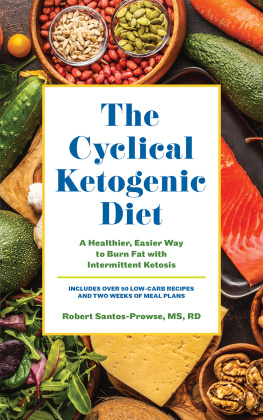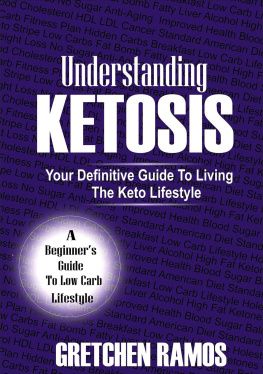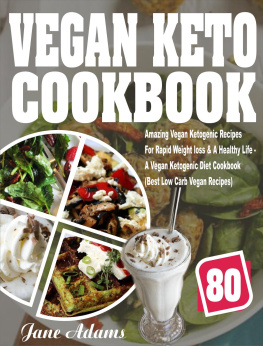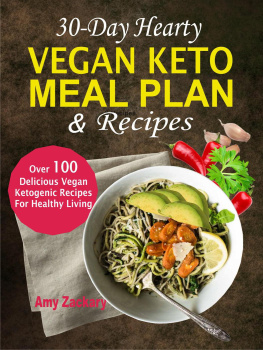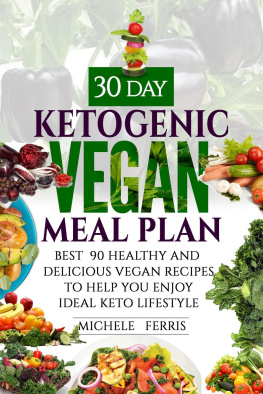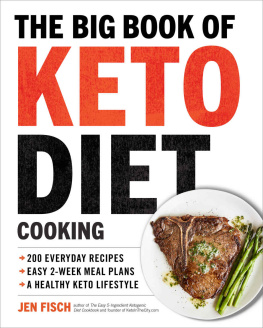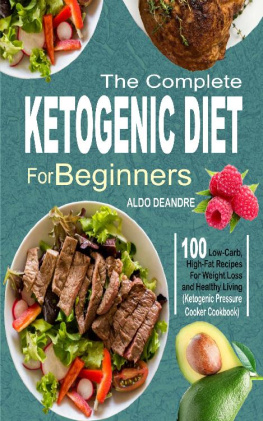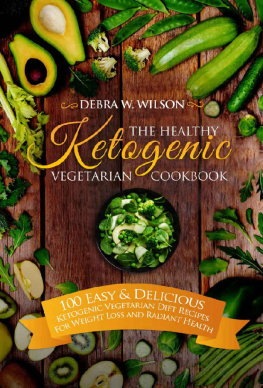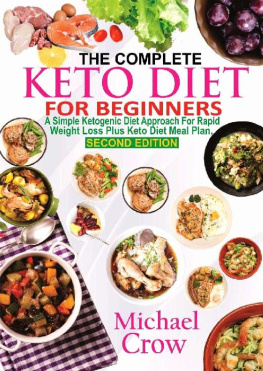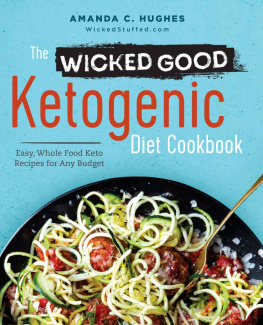
The
Cyclical
Ketogenic
Diet
A Healthier, Easier Way
to Burn Fat with
Intermittent Ketosis
Robert Santos-Prowse, MS, RD
Text copyright 2019 Robert Santos-Prowse. Design and concept copyright 2019 Ulysses Press and its licensors. All rights reserved. Any unauthorized duplication in whole or in part or dissemination of this edition by any means (including but not limited to photocopying, electronic devices, digital versions, and the internet) will be prosecuted to the fullest extent of the law.
Published in the United States by:
Ulysses Press
P.O. Box 3440
Berkeley, CA 94703
www.ulyssespress.com
ISBN: 978-1-61243-884-9
Acquisitions editor: Bridget Thoreson
Managing editor: Claire Chun
Editor: Shayna Keyles
Proofreader: Renee Rutledge
Front cover design: Chris Cote
Interior design: what!design @ whatweb.com
Cover photo: Nina Firsova/shutterstock.com
Interior art: Geoffrey Pratt
Production: Jake Flaherty
IMPORTANT NOTE TO READERS: This book has been written and published for informational and educational purposes only. It is not intended to serve as medical advice or to be any form of medical treatment. You should always consult with your physician before altering or changing any aspect of your medical treatment. Do not stop or change any prescription medications without the guidance and advice of your physician. Any use of the information in this book is made on the readers good judgment and is the readers sole responsibility. This book is not intended to diagnose or treat any medical condition and is not a substitute for a physician. This book is independently authored and published and no sponsorship or endorsement of this book by, and no affiliation with, any trademarked brands or other products mentioned within is claimed or suggested. All trademarks that appear in ingredient lists and elsewhere in this book belong to their respective owners and are used here for informational purposes only. The author and publisher encourage readers to patronize the quality brands mentioned in this book.
Contents
Preface
In my younger days, I was as clueless about nutrition as a person could be. Id been overweight for as long as I could remember and drifted into obesity sometime around the sixth grade. I certainly made some bad choices regarding food, but I dont remember being obsessed with it or constantly eating, the way obese people are often portrayed in media. I just grew up in the toxic food environment that has existed in this country since the late 1970s.
The first edition of our governments sweeping dietary recommendations, the Dietary Guidelines for Americans, was released the same year that I was born. My weight increase followed the same trend line as the countrywide weight increase. From 1980 to 2000, the prevalence of obesity in America increased by nearly 150 percent in children and adults.
My diet was what we call the Standard American Diet, appropriately abbreviated SADa diet of foods that are high fat, high protein, high carbohydrate, and highly processed, such as low-quality restaurant and convenience foods. My lifestyle habits were not ideal, either. My usual after-school activity involved video games either with friends or alone. The combination of 7 hours of school and 7 or 8 hours of video games meant 14 to 15 hours of sitting almost every day. No wonder I struggled. However, it was also very frustrating because I was the only obese kid in my tight group of five or six friends. Though they were a little more reasonable than I was regarding their diet, it wasnt by much. One of them lived almost exclusively on buttered noodles and Little Debbie fudge rounds.
I occasionally tried to lose weight without much success. When I went to college, things got a little better. I was working and attending school full time, so I had far less time to sit, snack, and play video games. I lost about 20 pounds and kept it off while I completed my degree in mass communications.
After working in the print industry for a few years, I got laid off during the economic downturn of 20082009. I spent about 6 months looking for work without success. Then my stepfather became seriously ill. He spent 11 days in the hospital and, being unemployed, I was able to spend most of that time with him. I was still obese, but my eating habits had gotten a little better.
The selections of foods offered both in the patients rooms and in the cafeteria were appalling to me: prepackaged pastries, heat lampshriveled pizza, and other processed, shelf-stable crap. Even then, I had an intuitive understanding that something was wrong when a hospital, a place that is ostensibly designed with health in mind, was offering such low-quality foods.
I thought, We have to be able to do better than this, and decided to go back to school and become a dietitian. It took me just under 5 years to complete a second undergraduate degree in human nutrition, a masters degree in clinical nutrition, and the required 1200-hour internship to become a registered dietitian. Coursework for dietitians includes a foundation in the basic sciences like chemistry, biology, physiology, and statistics, as well as a wide variety of topics related to nutrition, such as food science, psychology, and classes regarding how the bodys nutritional requirements change in certain disease states.
We were taught the overly simplistic model of weight control: calories in vs. calories out. The explanation goes that weight control and fat accumulation is based purely on how much energy you put into your body vs. how much energy you use. While I had lost more weight by eating less and moving more, it was only about another 30 pounds. I was still clinically obese and being told that the answer was as simple as eat less was very frustrating to hear repeatedly.
We were first introduced to ketosis and a ketogenic diet during our discussions of epilepsy. For most of its history, the ketogenic diets main use in clinical practice has been the control of epileptic seizures in children when drug therapy has been ineffective. Following accounts of fasting being used to treat epilepsy, physicians at Johns Hopkins hospital in the 1920s developed the ketogenic diet to mimic the physiological state of fasting while still being able to provide nutrition. Amazingly, as many as 90 percent of children following a therapeutic ketogenic diet report a significant reduction in the number of monthly seizures they suffer.
Other than that, the ketogenic diet was not really discussed again in my coursework. We did, however, discuss the pathways and mechanisms behind the metabolism of nutrients. We discussed how the body breaks down each of the macronutrientscarbohydrate, protein, and fatfor energy, from the mouth all the way down to the cellular level. My nutritional biochemistry professor referred to this as energy accounting because he would make a balance sheet for energy used versus energy produced by each process. At that time, I remember thinking that the relative metabolic inefficiency of fat and protein could be exploited for weight loss in some way, but I never made the connection with the ketogenic diet.
Later, in my graduate work, I was researching a presentation about the traditional practice of fasting during the Islamic holy month of Ramadan and kept reading about the improvement in metabolic markers like insulin sensitivity and blood glucose control during the fasting period. In addition to the measurable benefits of fasting, I read reports of increased mental clarity and higher energy levels during the fast.
Next page
